The Puffing Pig of Iceland: Meet the Harbour Porpoise
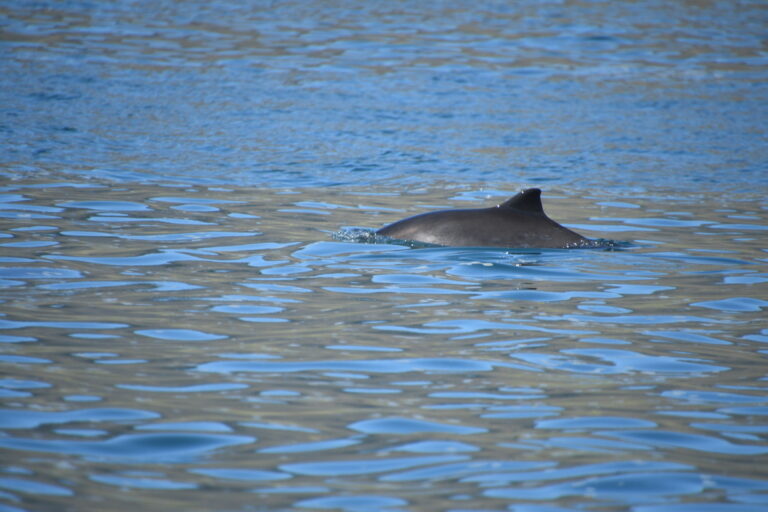
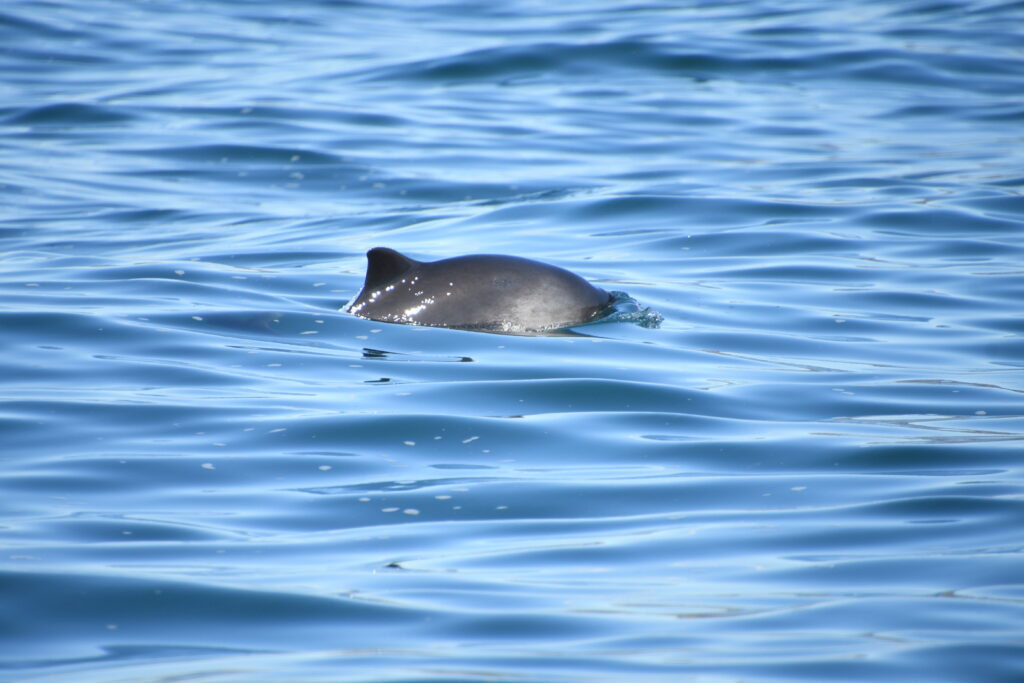
The smallest cetacean here in our bay, is the harbour porpoise (Phocoena phocoena), and it often gets overlooked – sometimes because we literally miss it! Growing up to just 1.5 metres and weighing only 70 kg, these small porpoises can be difficult to spot in the waves sometimes. Although they are very shy and elusive, they won’t miss the opportunity to surf the big waves, so even if we only get a glimpse of them, they’re still having lots of fun! When the waves are calmer, you’ll typically get to see these beauties surfacing 2-3 times, but on rare occasions, they interact with the boat a lot more. They’re also a species that doesn’t engage in behaviours like breaching or tail-slapping.
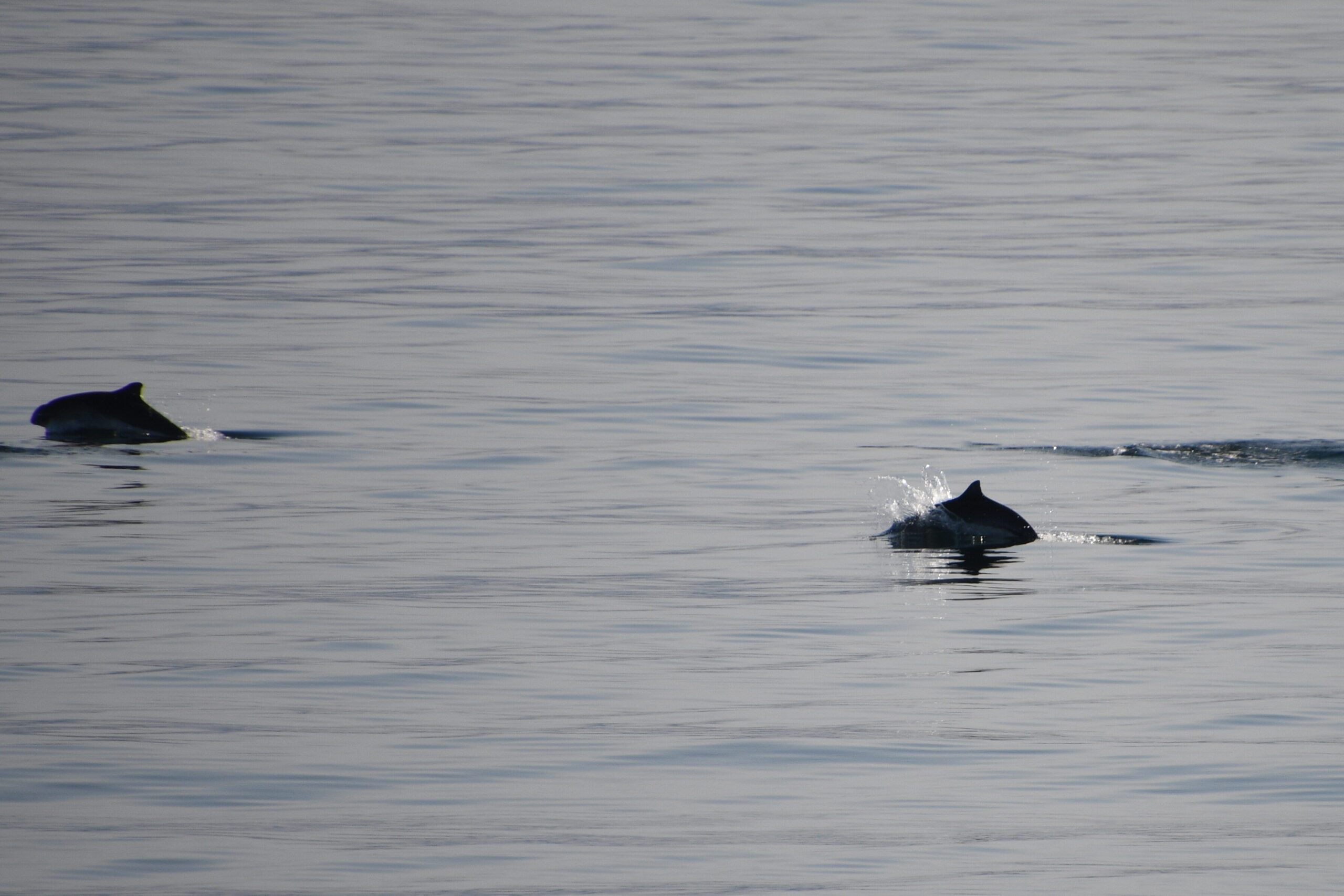
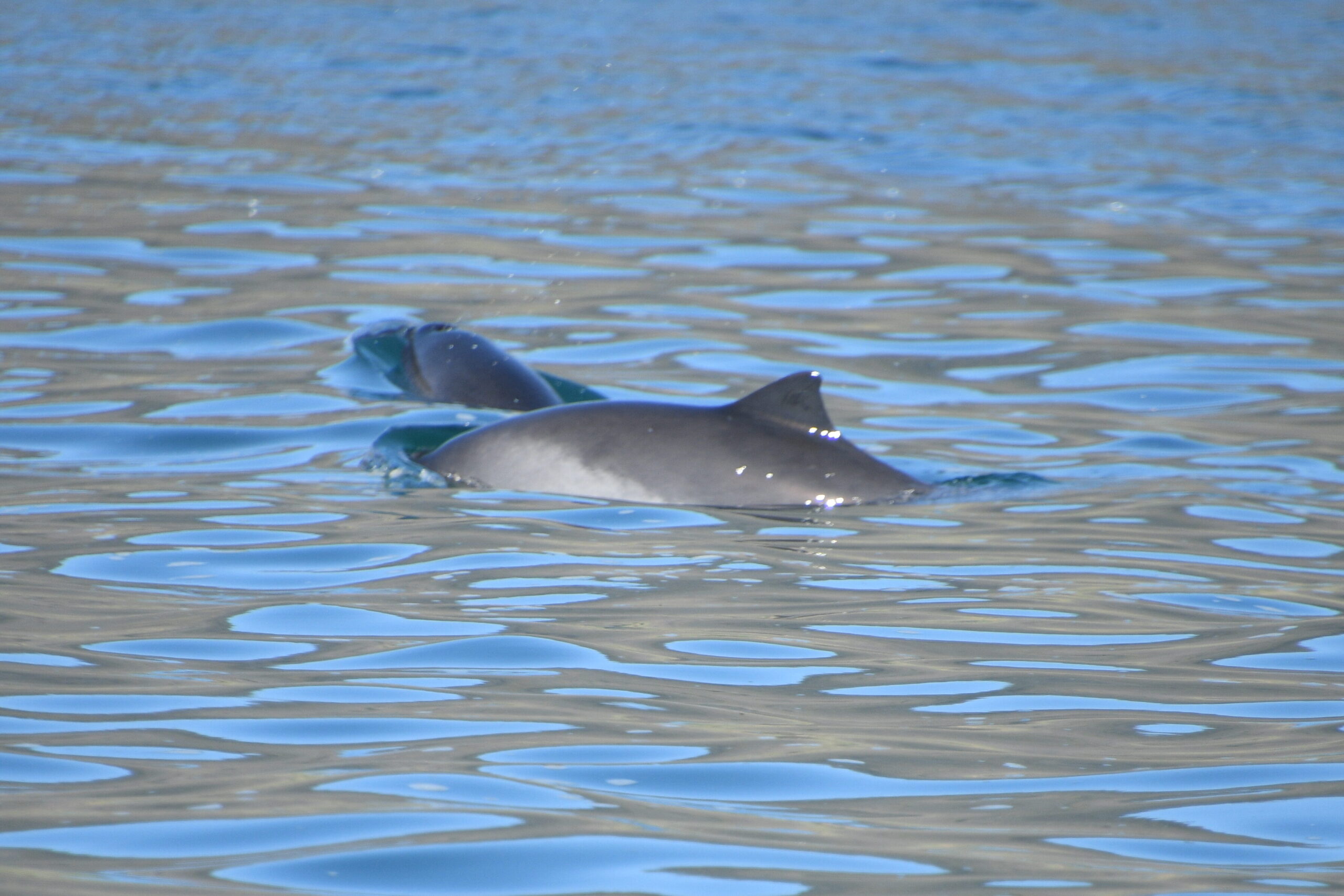
Small pods of harbour porpoises, taken on-board by Rebecca Roberts
As toothed whales, harbour porpoises typically live in small pods of 2-3 individuals, though pods of up to 6 can sometimes be seen. There have even been reports of aggregations of up to 200 individuals – likely feeding events. They use echolocation to feed, producing short-range, high frequency clicks that go undetected by predators like killer whales! However, they have also been preyed upon by sharks, grey seals and bottlenose dolphins. Interestingly, harbour porpoises have stopped producing whistles to further avoid detection.
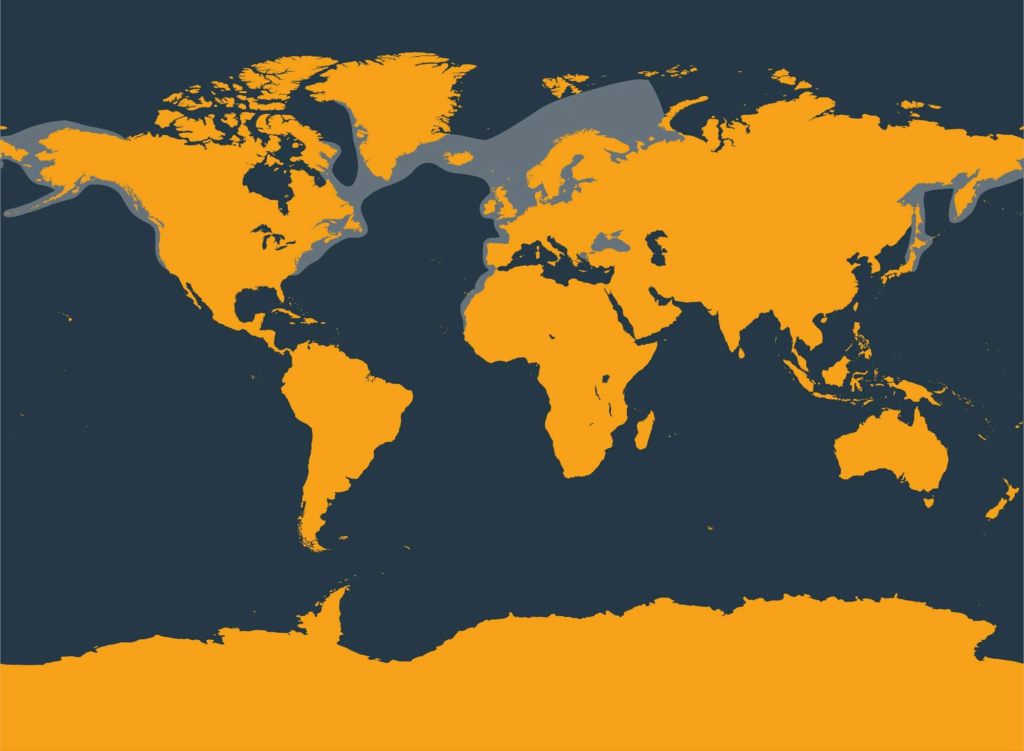
There are three subspecies of the harbour porpoise: the Pacific, the Atlantic and the Black Sea populations. This highlights their distribution around the world, where they prefer cool temperate or subpolar waters along coasts. You’ll find them in depths less than 100 metres, especially in shallow bays, estuaries, tidal channels, and even rivers! Globally, it’s estimated that there are over 1 million harbour porpoises!
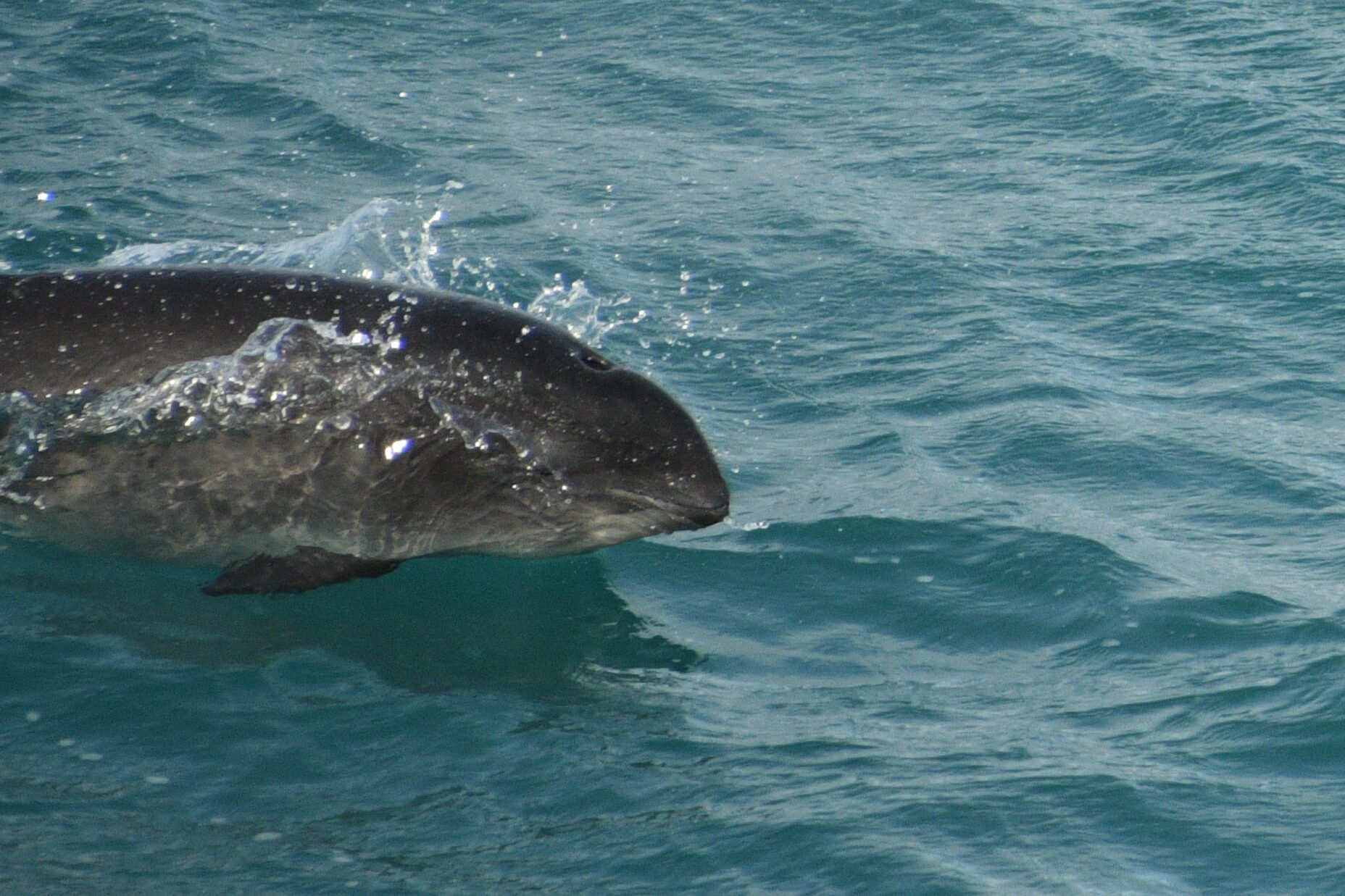
Harbour porpoises are known by many names worldwide, most of which are derived from the puffing sound they make when surfacing! The English word ‘porpoise’ comes from the Latin ´porcus´, meaning pig – hence the nickname ‘puffing pig’. Elsewhere, they may be called pig-fish, sea-pig or pig-whale. In Icelandic, they’re called hnísa, a name derived from the Old Norse word for sneeze!
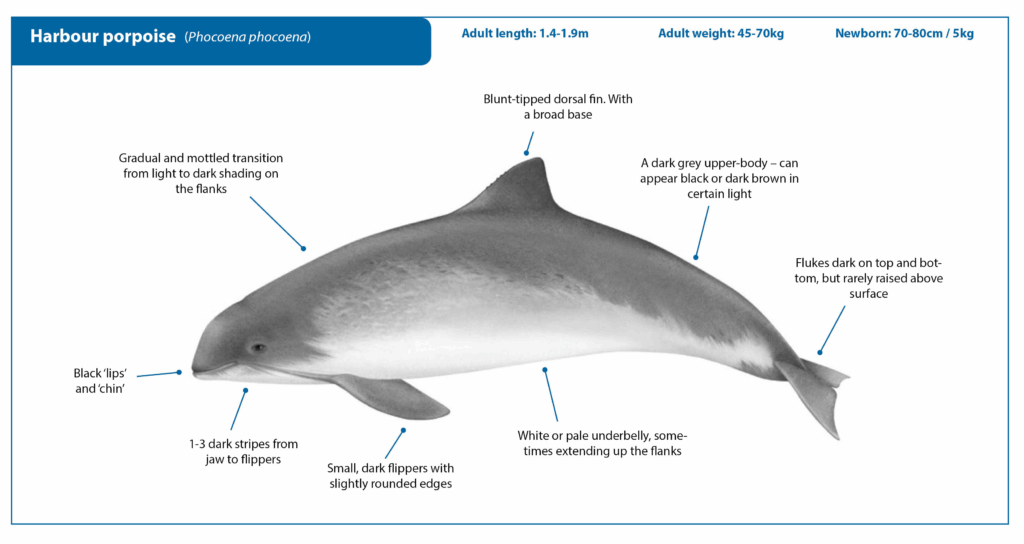
To identify a harbour porpoise, look for a small, triangular dorsal fin on their back. Unlike dolphins, porpoises lack a beak and instead have a rounded head. Their stocky, robust bodies are dark brown or grey with a paler underside. Though they may resemble dolphins, they belong to a different family. Dolphins have a curved, sickle-shaped dorsal fin, and they also have different shaped teeth. In their upper jaw, harbour porpoises have 22–28 pairs of spade-shaped teeth, and 21–25 pairs in their lower jaw.

You might assume that harbour porpoises don’t need to eat much, but due to their high metabolic rate, they are constantly feeding – both day and night. They can eat up to 10% of their body weight in a day (about 7 kg), targeting fish with high fat and caloric content. This includes species like herring, sprat, anchovies and sandeels. Some studies have shown that they can consume up to 3,000 of these small fish in a day!
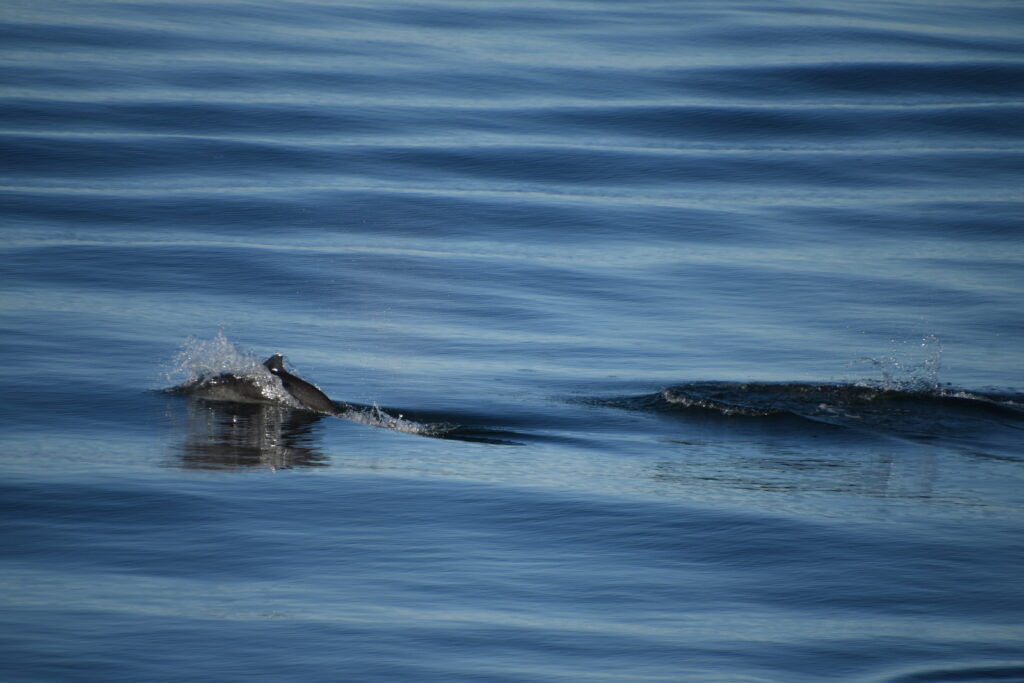
For most toothed whales, males are larger than females, but harbour porpoises exhibit reverse sexual size dimorphism, where females are larger. This helps meet the energetic demands of pregnancy and enables females to dive deeper and catch larger prey. Dives typically last around 6 minutes and can reach depths of up to 220 meters!
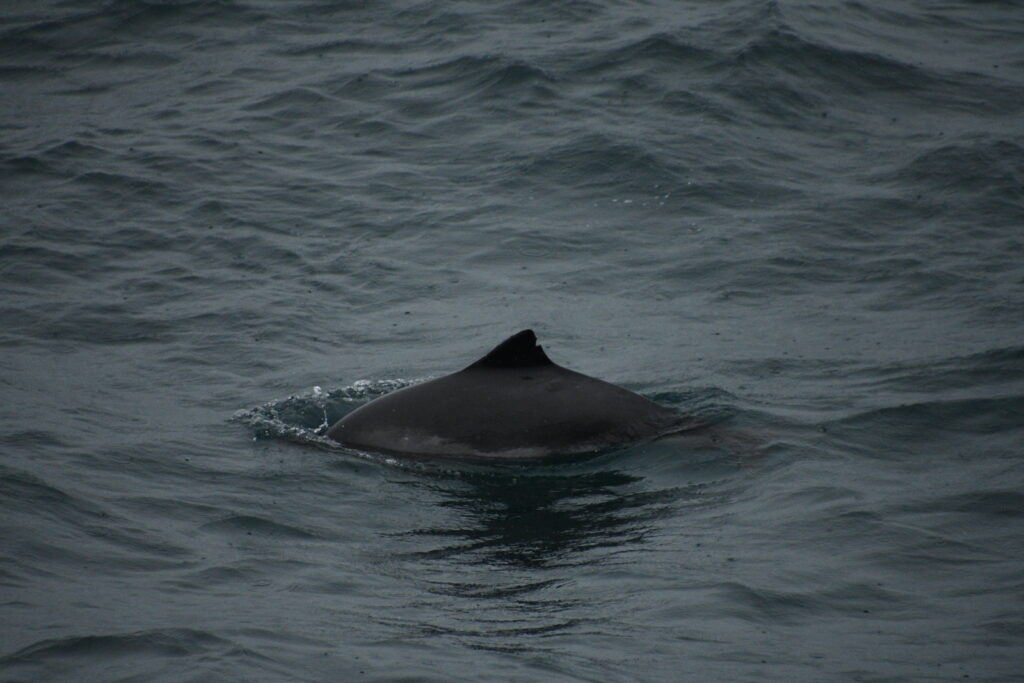
Pregnancy lasts around 10 months, with calves born at 70-80 cm in length and weighing 5 kg. Calves are fully dependent on their mothers milk for the first year, and will remain with her for 18 months. During this time, they begin learning to catch small crustaceans and fish before being fully weaned. Here in the Atlantic Ocean, females can produce one calf per year, whereas in the Pacific, it’s every other year. On average, harbour porpoises only live for 10 years, with a few recorded of living into their 20’s. Both females and males reach sexually maturity between the age of 3 and 4.
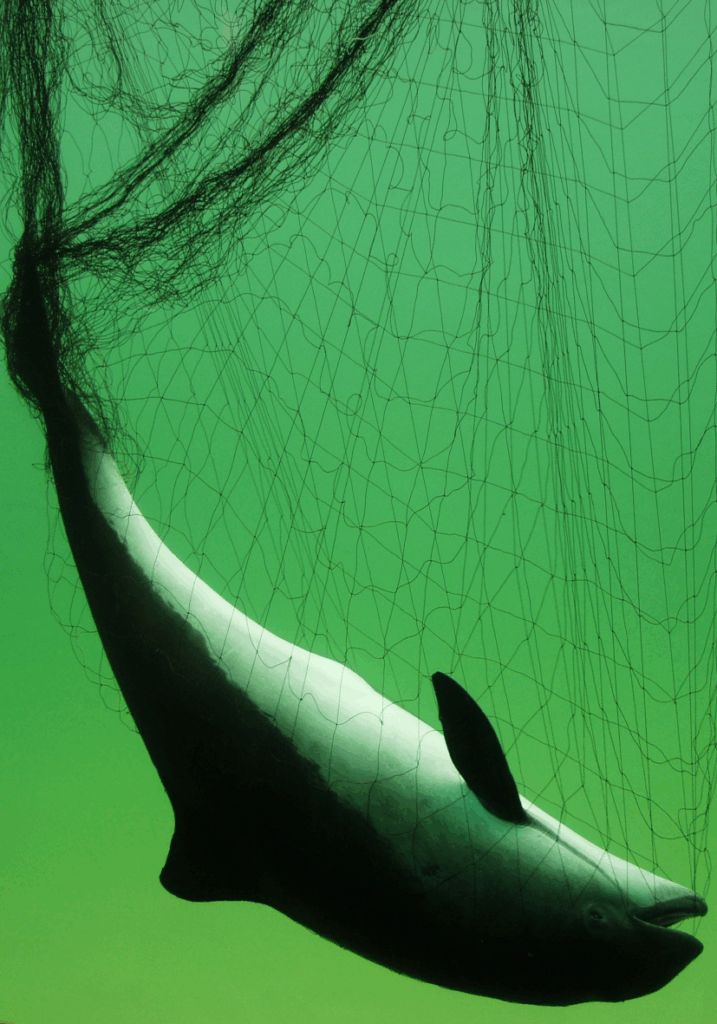
It’s important that we protect this species, especially given their shorter lifespan. In Iceland, bycatch is a major threat, with around 200 individuals reported each year caught in fishing nets each year- particularly gillnets. In addition to entanglement and bycatch, they face threats from chemical and noise pollution, habitat degradation and declining prey availability from overfishing. Although harbour porpoises are not targeted in commercial whaling, they are still part of the small cetacean hunts in Greenland, with a yearly catch of 2,500-4,000 individuals.
These elusive marine mammals play a crucial role in maintaining the health of marine ecosystems, yet their quiet presence often means their plight goes unnoticed. Supporting sustainable fishing practices, reducing ocean noise, and advocating for marine protected areas can help reduce threats to these animals. By learning about harbour porpoises, we take a vital step toward ensuring that future generations can continue to enjoy and admire these unique animals in Iceland. So join us on a tour today, and get to witness their beauty.
By Rebecca Roberts

